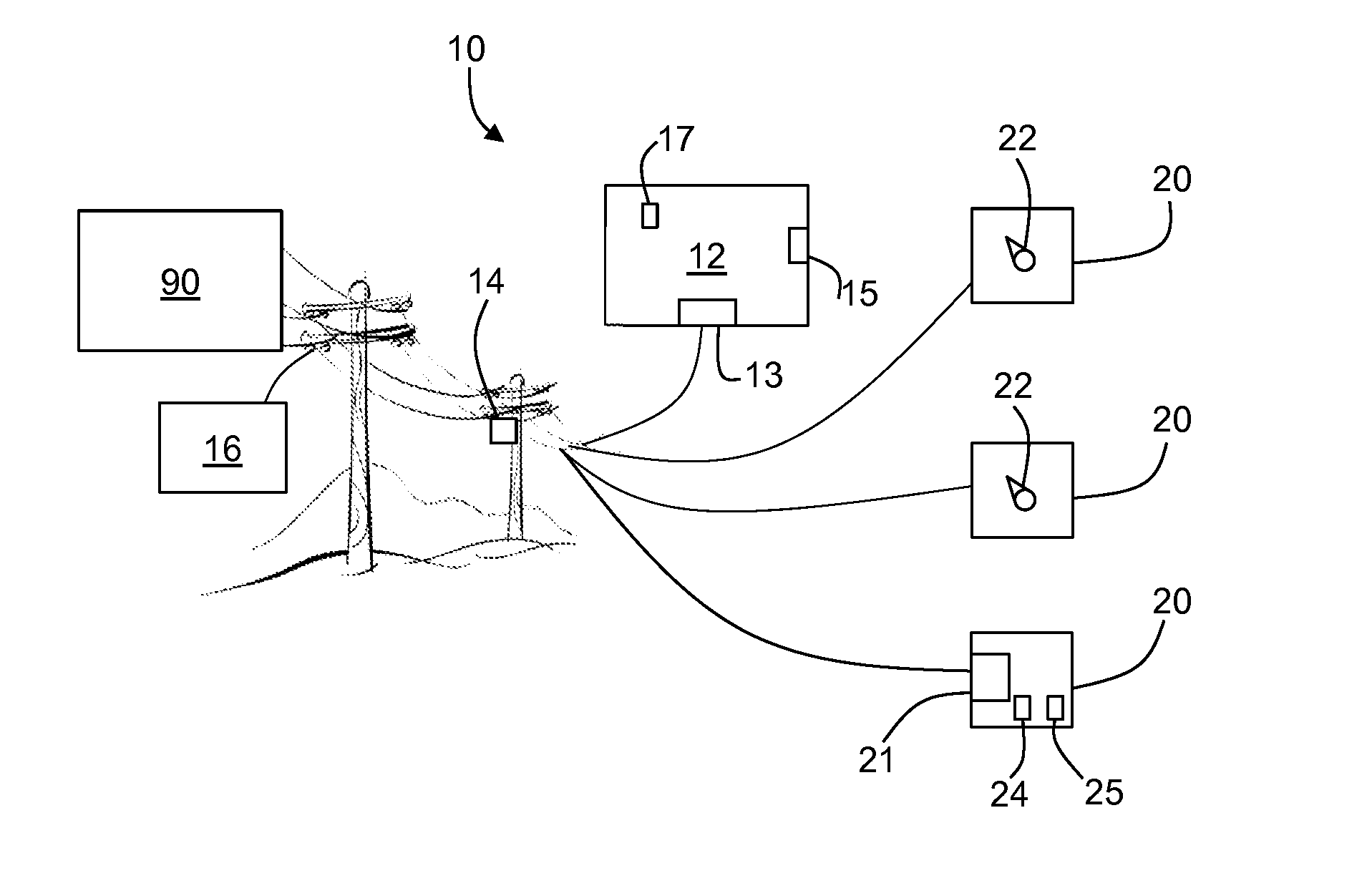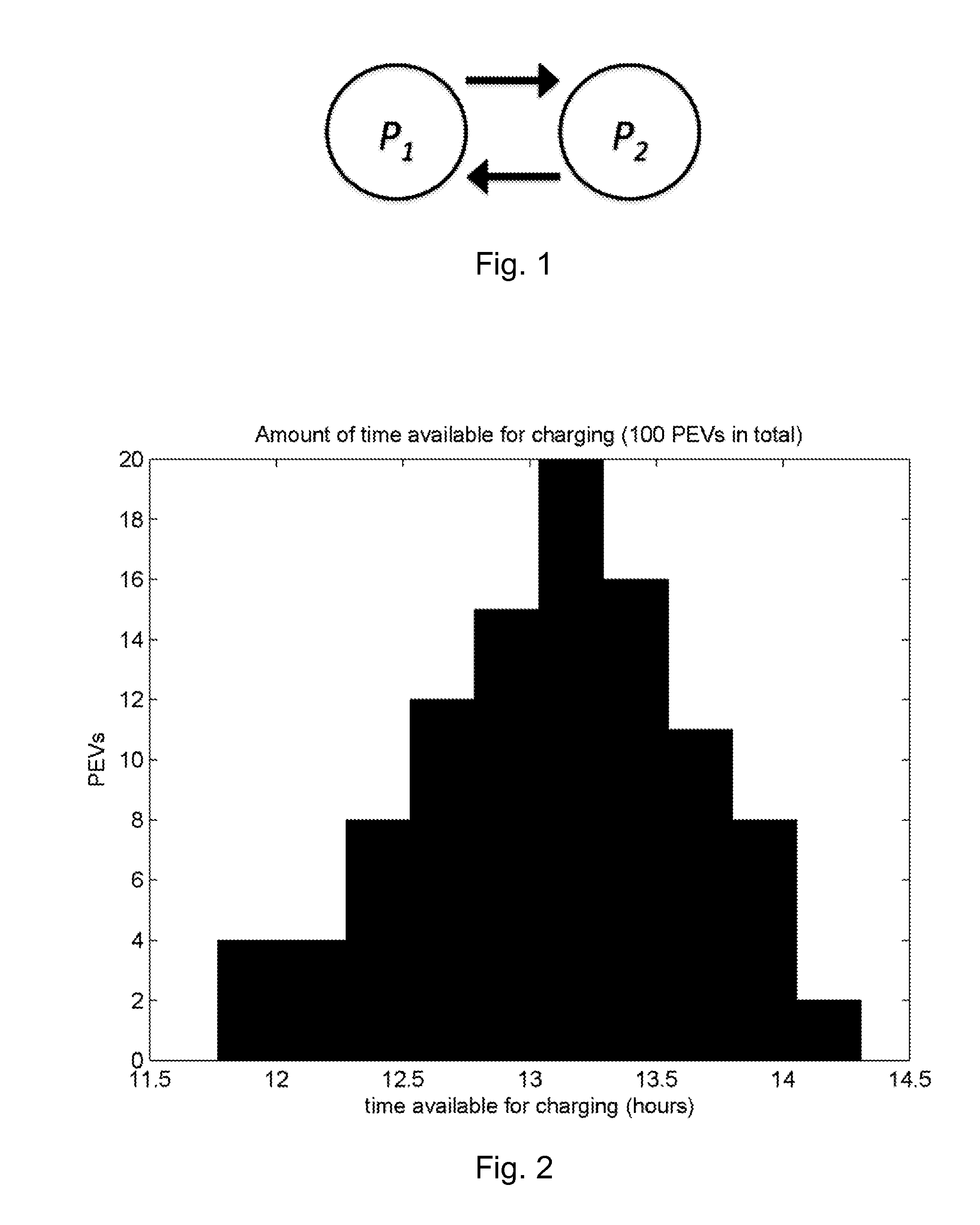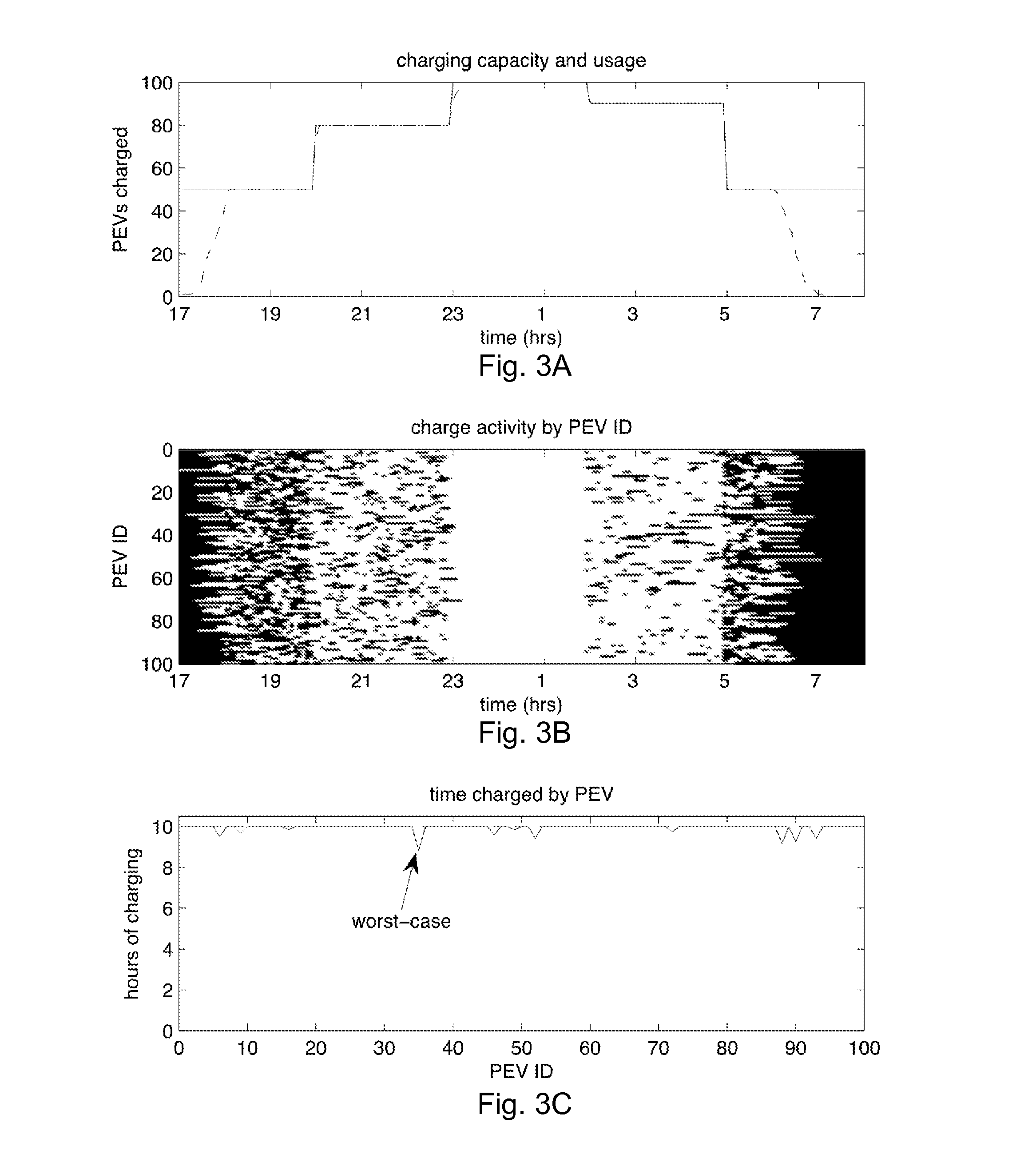Systems and methods for random-access power management using packetization
a power management and packetization technology, applied in the field of system and method for random-access power management using packetization, can solve the problems of increasing pev charging, affecting residential distribution infrastructure, aging power delivery infrastructure, etc., and reducing the bandwidth required for communications, the effect of easy adaptation
- Summary
- Abstract
- Description
- Claims
- Application Information
AI Technical Summary
Benefits of technology
Problems solved by technology
Method used
Image
Examples
examples
[0093]The following example sets are intended to be non-limiting and used for the purpose to further describe the techniques of the present disclosure. It should be recognized that other automaton designs may be used, more than one automaton design may be used, and other implementations of charge management systems using packetized charges are all within the scope of the present disclosure.
example set 1
2-State Automaton
[0094]To illustrate the proposed method, a simple and readily scalable example is presented in which the charging of 100 PEVs needs to be managed. In this set of examples, Level-1 home charging for the vehicles is assumed, and it is assumed 10 hours (i.e., 120, 5-minute power packets) is required for a vehicle to complete a full charge (0-100%). Three examples (1A, 1B, and 1C) are considered to illustrate the flexibility and robustness of the approach rather than to provide specific performance numbers. Table 1 summarizes the simulation constraints for example set 1. For each of these examples, a normal distribution of evening times when the PEV charging can start and when it can end was assumed, corresponding to PEV home arrival and departure times. For each PEV, a vehicle plug-in / plug-out time was established to determine the window of charging opportunity (see FIG. 2).
TABLE 1Simulation Parameters for Example Set 1ParameterDistributionplug-in timenormally distribu...
example 1a
Fixed Demand, Variable Supply
[0095]Example 1A is illustrative of a “worst-case scenario” where all 100 PEVs require the maximum 10 hours of charging during the evening (i.e., each PEV requires 120, 5-minute power packets). In this example, the simple N=2 state automaton of FIG. 1 was set to have P1=1.0 and P2=0.5 for all 100 PEVs.
[0096]FIGS. 3A-3C show the ability of automaton-based random access approach of this example to fulfill the charging requests of 100 PEVs when the power system has variable capacity. In FIG. 3A, it can be seen that under the conditions where the supply is variable (solid line—50, 80, 100, 90, and 50 PEVs), the automaton approach allows the PEVs in an uncoordinated manner to utilize the capacity (dashed line) nearly completely. One will note some latency as the capacity changes from 80 to 100 PEVs. This is a result of many PEVs being in their lower probability state (as the capacity was previously constrained) and thus not requesting permission to charge in ...
PUM
| Property | Measurement | Unit |
|---|---|---|
| Temperature | aaaaa | aaaaa |
| Electric energy | aaaaa | aaaaa |
| Power | aaaaa | aaaaa |
Abstract
Description
Claims
Application Information
 Login to View More
Login to View More - R&D
- Intellectual Property
- Life Sciences
- Materials
- Tech Scout
- Unparalleled Data Quality
- Higher Quality Content
- 60% Fewer Hallucinations
Browse by: Latest US Patents, China's latest patents, Technical Efficacy Thesaurus, Application Domain, Technology Topic, Popular Technical Reports.
© 2025 PatSnap. All rights reserved.Legal|Privacy policy|Modern Slavery Act Transparency Statement|Sitemap|About US| Contact US: help@patsnap.com



